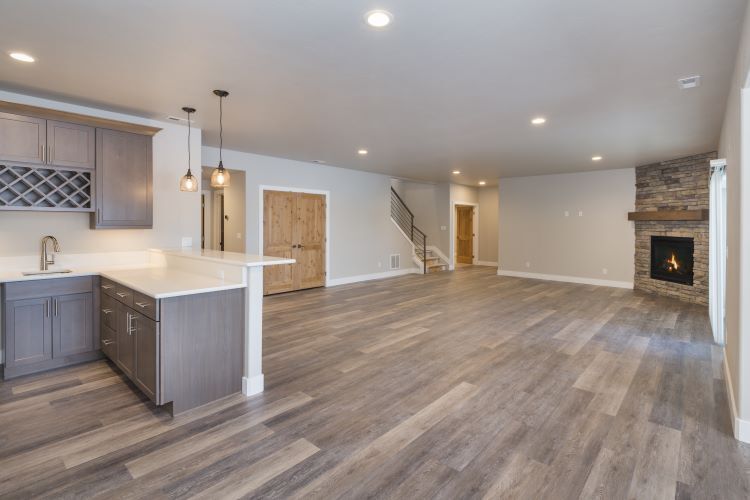How does electricity get to your house?

Let's start by explaining what electricity is. Electricity is a form of energy that can be created and transmitted through a variety of means, one being the copper wires found in most homes connected to an electrical source. In this article we will explain how the electricity from your power company gets to your house or business and how it flows throughout all the wiring inside to make things work.
In order for electricity to be used as a usable form of energy, it must first be converted from its usable form into something more useful like a current carried on a wire. This process starts at power plants where generators create electricity then carried on high voltage transmission lines that carry the electricity over long distances, often across several states at very voltages where it is then stepped down to lower voltages for distribution.
The electricity generated at power plants usually starts out at 765,000 volts or higher and depending on the size of the transmission lines close to where its generated it may start as high as 765,000 volts then drop down to 138,000 volts before reaching a substation. From there it is transformed into smaller stages from 138,000 to 34,500 then finally dropped down one more stage from 34,500 volts to 4,160 then 3,300 before entering the service area where the substations deliver power directly to local transformers near homes and businesses.
These large transformers take in roughly 3-4 kV along with two hot wire carrying lines that run next to each other carrying a third neutral line which gets carried inside to the transformer where it is transformed from 3-4 kV down to 240 volts or 120/240 single phase power. This process of reducing voltage by a factor of 100 occurs at each and every transformer along a loop, making them critical to proper distribution.
The wire from your house generally starts as 2 hot wires with a ground wire that run together through your breaker panel then eventually branch off into multiple branches that deliver electricity throughout all parts of your home or business. The first stage begins at the main service entrance, beginning as the two hot wires that travel up directly from the service drop which come in via underground conduits connected to either side of this entry point and create what we call a "Tripod" or "T" configuration with the neutral wire running in the middle of it. This point is called a meter which can often hold up to 200 amps of current on each side for commercial services.
The service entrance brings electricity directly into your home or business, where it branches off into smaller lines that eventually branch off again and again until they reach breakers at every appliance in your home. From here you have control over what gets power and what doesn't using circuit breakers to cut the power off while still leaving some appliances powered on if needed. These circuits are then built up into even larger groups by electricians who specialize in residential wiring jobs to ensure safety during normal operations and emergencies through proper grounding, short-circuiting, and proper wiring from the breaker panel to appliances.
One of the most important things you will learn about electricity is that it has a very difficult time traveling over long distances for large amounts of power because while electricity can travel great distance through a conductor such as a copper wire, going into another circuit with different voltage levels causes power loss during transmission. For example if line 1 has 240 volts at 50 amps coming out of its service entrance and transformer while next door line 2 only has 120 volts at 25 amps after being transmitted from line 1 down the block, both lines would have similar voltages when entering their respective meter but after traveling from the street to their meters they are now unbalanced and cause power loss in the process. This power loss is called "I2R Loss" which means current squared times resistance. The longer the wire or distance it travels through poor wiring, bad connectors, long distances without proper voltage reductions, etc causes even more power to be lost which just results in higher bills for you with nothing given back for this excessive use of electricity.
Electricity is very difficult to work with and many people just ignore how dangerous it can be if you don't know what you're doing when trying to install new circuits (Which can often lead to fires), working on appliances, fixing circuit breakers (Overloaded circuits are dangerous because the wires behind your breaker panel contain no more insulation than they need which gets burned away once overloaded past their limits), or even simple tasks like replacing light bulbs. Electricity is very dangerous if you don't know what you're doing so I would recommend never working on anything with it unless an electrician is present who has the proper training to ensure safety.
The next time you use your computer, flick on a light switch, or even cook food in your kitchen think about how electricity got there and how its gotten to all of the appliances where you are using them at this exact moment. That wire behind your breaker panel made possible by power plants hundreds of miles away gives us the power to work, play, relax, sleep… Life wouldn't be as great without access to electrical power!
If you have a home remodeling project that requires electrical work then our team can help. We have licensed and qualified electricians on our crew who have extensive knowledge and experience when it comes to home electrical services. Give our team a call today and we would be happy to schedule a free in home consultation for your next project.
You might also like




